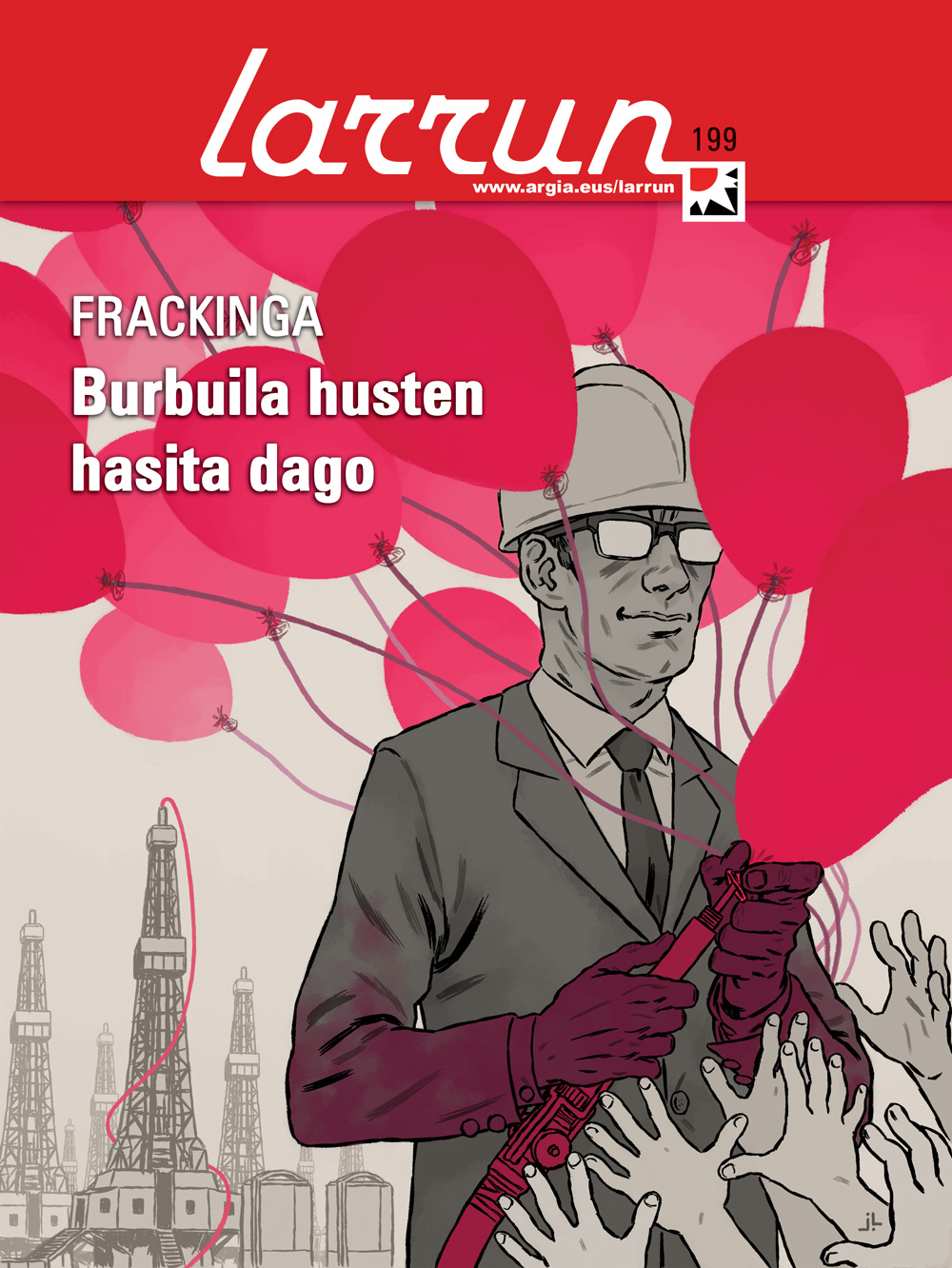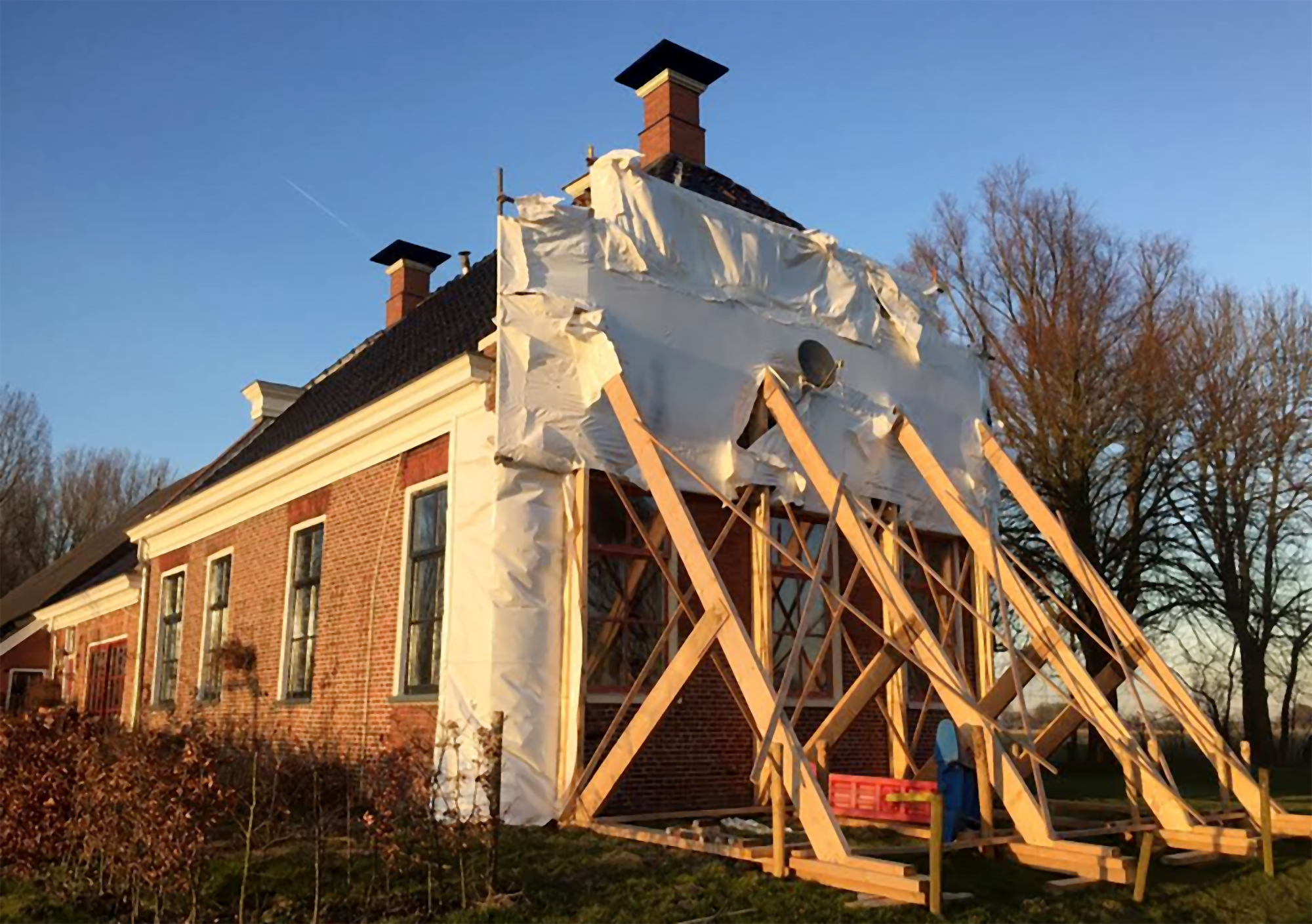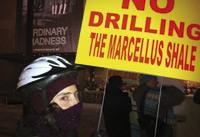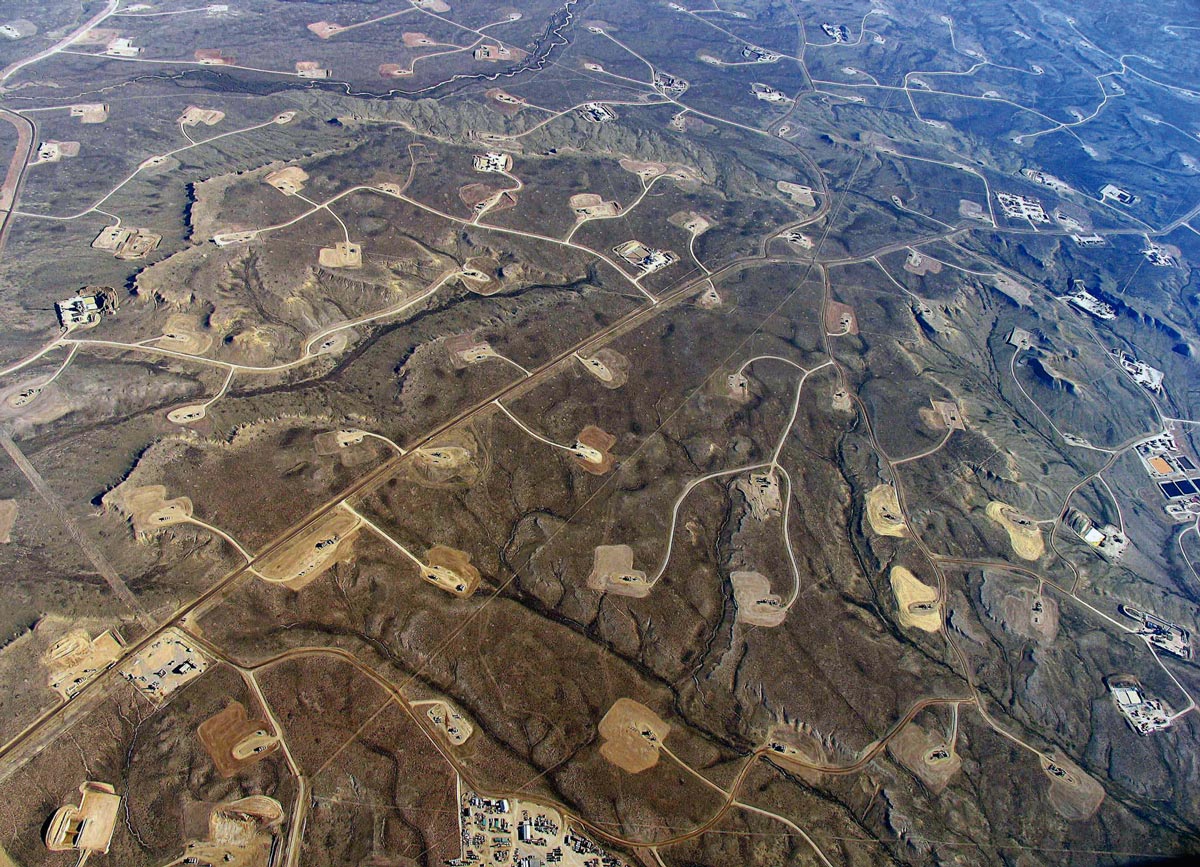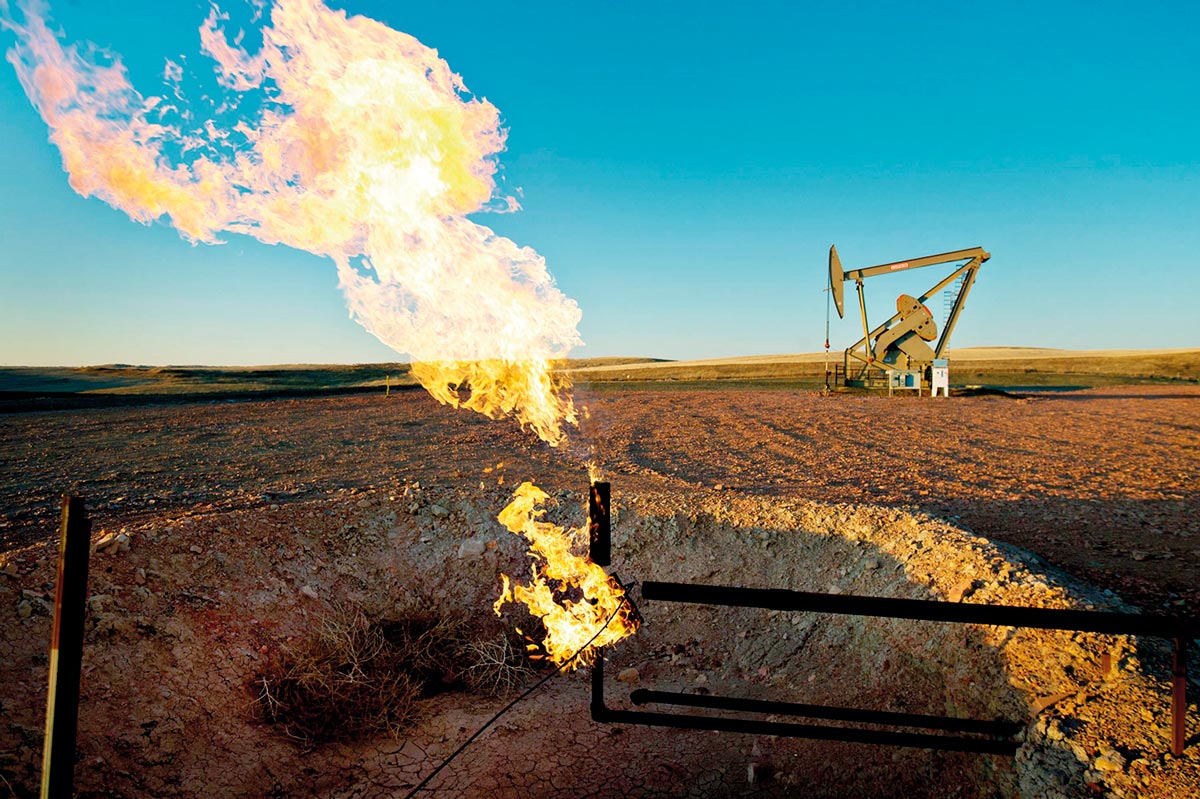The fracking disaster
- The following article is largely based on the report The Disaster of Hydraulic Fracture, published by Ekologistak Martxan in 2013. Passages from other sources have been added to the text, such as those from the blog The Oil Crash and those from the report Drill, baby, drill by geologist David Hughes. The disaster is analysed from the point of view of energy and the economy. Obviously, the two are tied together. Concerning energy, the low rate of return of resources obtained by fracking (EIT) stands out: the amount of money obtained per unit of energy used in extraction is insufficient and does not justify the investment made. However, it cannot be denied that it has been able to get benefits on the fracking road, at least until the bubble bursts. The second part of the text covers the hydraulic fracturing speculation operations that have been carried out.
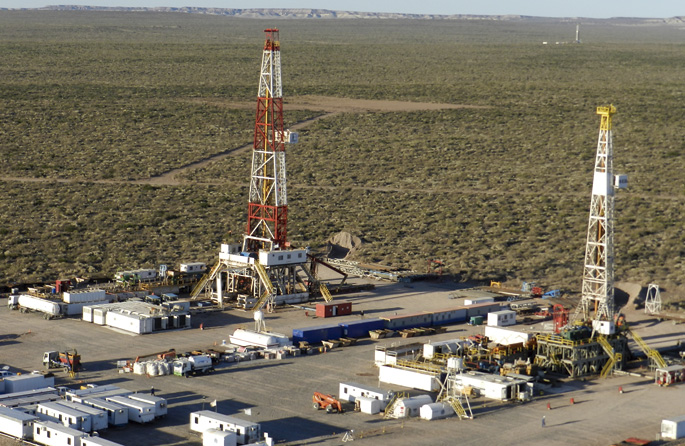
Myths have been built about unconventional hydrocarbons: they are the solution to the scarcity of fossil fuels, which contribute to mitigating climate change... Perhaps those related to the energy sector are the most difficult to understand. In the following lines we will try to answer the question: Is the decision to extract unconventional gas energy-efficient?
Oil peak and hydraulic fracture
The peak of oil has already become a reality. It doesn't matter if it happened a few years ago, according to some studies, or if production stays constant for a while. Natural gas will also reach its peak in a few decades. One consequence of this is that hydrocarbons cannot be extracted at the same rate as in the past. The oil industry therefore relies on deposits that were previously not economically viable. Unconventional.
The adjective “non-conventional” does not refer to the product itself (gas or oil), but to the techniques used for its extraction. One such technique is fracking. Its massive development should be seen as an attempt to keep the hydrocarbon tap open in one way or another, even if its economic, ecological and social cost is much higher than that of the previous era.
Energy deterioration of hydraulic fracture
The energy return rate (ITE) is the ratio between the energy obtained from a given source and the energy used to obtain it. The more EIT, the more energy efficient this source is: the same energy investment puts more energy in the hands of society.
It is not easy to calculate the EIT of gas extracted by fracking. There are no up-to-date direct measurements, but indirect methods can be used, comparing energy performance with economic performance, among others. These methods show that the values are very low. Considering that the production costs of US non-conventional gas are eight times higher than those of Russian conventional gas, and knowing that the EIT of Russian conventional gas is approximately 20:1, we can consider that the cost of slate may be between 2:1 and 3:1. Spend one to get two or three. It should be noted that for the exploitation of a hydrocarbon to be economically profitable, the EIT should normally be higher than 10.
At the dawn of the industrial revolution, the energy performance of coal enabled the EIT to reach 50:1, but not around the world, but in the industrialised countries of Europe and North America. They became metropolis and many other regions of the Earth, in their colony. The EIT of the metropolis binomial was slightly above 10:1. The advantages of 50:1 and, as was later seen, the disadvantages, could only be enjoyed by the rich of the world.
Global EIT, continuously decreasing
The beginning of the oil era led the EIT to rise to 100:1 (on the privileged side of the world, no doubt). The fuel was very close to the surface, it was energy high-performance ... Oil could be bought and processed at an affordable price, and that explains the fat ITE. Only the fact that these enormous amounts of energy are at hand is what makes a lifestyle so “own” for a West today.
The problem is that we've not only maintained that lifestyle, but we've increased, but ITE isn't 100:1 before. Gradually, we began to extract hydrocarbons that were less close to the surface and that were not as pure as the others were exhausted. In order to achieve the same energy, more energy needs to be spent, while consumption is constantly growing. Currently, the EIT for oil around the world is around 20:1 hours, and continues to descend. With the decline of conventional hydrocarbons, which are low cost and easy to obtain, there has been an increase in the percentage of non-conventional hydrocarbons in total: In 1965 it was 3%, currently 20%.
Hydraulic fracture and speculation
As we have seen, fracking is by no means an energy solution for the future. But even if this is obvious, playing with the calculated reserves can be very profitable for some companies. A paradigmatic case of this is the unconventional oil and gas field of Vaca Muertos (Argentina). When Repsol announced that the oil company’s reserves were 22,000 million barrels equivalent, shares in the Argentine YPF section increased by 7%. But Repsol’s intention was not to exploit the site, which invested very little money, but to get rid of it for as much as possible, as demonstrated by the fact that it had held 142 meetings to that end. The operation was not carried out due to the expropriation of YPF by the Argentine Government.
It's not a unique example. Many companies that obtain a deposit of non-conventional hydrocarbons add up to their reserves and those of conventional deposits that are exploited in a much simpler and cheaper way. So they build the fiction that oil and gas are for long and reject the problems of new deposits.
Many analysts have warned. The boom in the hydraulic fracture has been compared to that of the subprime mortgage; on that occasion, the fraud consisted in blending the litter mortgages with those of lower risk and selling them all as the highest rating.
If that were not enough, the initial estimates of the moat reserves, which are announced with great fuss, are excessive, and in the end they have to be drastically reduced.
In 2011, the US agency EIA had to admit that the forecasts for the Marcellus area in eastern America were too high. Of the expected 410 trillion cubic feet, the U.S. Geological Service analyzed the area and left only 84. That is, only 20% of what is planned. The calculation made for Poland was even higher: Of the forecast of 187 trillion, only 1.3 trillion remained. A drop above 99%! And that, regardless of the fact that Poland's gas does not serve as a fuel, because it has too much N. The companies that were on the spot have left, leaving behind their business dreams.
Fracking gas bubble
Some unconventional hydrocarbon deposits are very productive, but they only account for a small percentage. Overall, the decline is rapid. According to David Hughes' Drill, Baby, Drill report, and in view of the United States experience, it is necessary to invest $42 billion a year in order to open new wells and keep gas flow intact. The most serious thing is that the resulting gas value is lower than the inverted: In 2012, for example, the Government of Spain disbursed $32.5 billion in cash. It can therefore be deduced that hydraulic fracture is an economically unfortunate business, not just environmental and energy.
Financial analyst Deborah Rogers, in a well-known report published in 2013 (the title is very significant: Was the price of natural gas organized? ), showed that the Wall Street financial companies had driven the exploitation of slate gas, bringing the gas price below the production price. As a result of this decline, the companies that made fracking became attractive to investors. The financial intermediaries received huge profits from the merger and purchase operations.
Forecasts of fracking, oil and fracking skyrocketed in this context. According to Rogers, the swelling was between 100% and 500%, as seen at the beginning of the extraction. This shows that it is a question of ensuring the financial business on a physical basis that is not solid.
.jpg)
Hainbat analistak uste dute hidrokarburo ez konbentzionalen EIT negatiboa dela, faktore guztiak kontuan hartuta. Bestela esanda, 1:1 baino txikiagoa. Iritzi hori du, berbarako, Valladolideko Unibertsitateko (Espainia) Carlos de Castro fisikariak (ikus Larrun 179, 2013-9-29). “Normalean, EIT kalkulatzean ez da kontuan hartzen ingurumenari egindako kalteak konpontzeko bai guk bai ondorengo belaunaldiek erabili beharko dugun energiaren kostua”, dio De Castrok.
Oro har, espainiar fisikariak uste du erregai fosilei egozten zaizkien energi itzulera tasek ez dutela errealitatea behar bezala islatzen. Bestela esanda, ez dio asko axola petrolio gordin konbentzionalak 10etik gorako EIT edukitzeak, azken buruan jendarteak erabiliko duen produktu eratorriek, autoetan sartzen dugun gasolinak edo dieselak esaterako, askoz txikiagoa baitute (aipatutako adibideen kasuan, 3-5 bitartekoa, kalte ekologikoak kontuan izan gabe ere), ageriko arrazoi batengatik: gordina fintzeko prozesuan ere energia xahutzen dugu.
Gas naturalaren falazia handiena da petrolioa ordezkatzeko balio duela. Honezkero dituen erabilerez gain (labe industrialak, findegiak, etxeko beroa), gas naturalak petrolioa ordeztu dezake zenbait aplikaziotan; esate baterako, gasolinazko motor bat gasez elikatu daiteke moldaketa txiki batzuk eginda. Baina aukera edukitzeak ez du esan nahi aldaketa gauzatzen ari denik. Eta ez da gauzatzen azpiegituretan egin beharreko inbertsioak eskergak liratekeelako. Gasa garraiatu eta biltegiratzea garestiagoa eta konplexuagoa da petrolioa garraiatu eta biltegiratzea baino, eta bigarren horretarako azpiegitura, gainera, badugu dagoeneko. Krisi ekonomiko betean oso arriskutsua da hamarkada batzuk barru arte amortizatuko ez diren inbertsio handiak egitea. Inbertsiogileak, bistan da, ez dira apustu hori egiten ari. Europan gas naturala etorkizunerako hautu ona dela pentsatzea norbere burua engainatzea da. Besteak beste, gas berriak konkistatu behar lukeen merkatua automobilarena delako, baina Europan gehiengoa dira diesela erabiltzen duten autoak, eta horiek ezin dira egokitu gasa baliatzeko. Auto salmenta hondoratuta dagoen honetan, nekez pentsa daiteke kontsumitzaileen kopuru esanguratsu bat kotxez aldatzeko prest egongo denik. Eta esportatzea ere ez da ideia ona; balizko erosleenganako gas-hodi bidezko loturarik gabe, likidotze eta birgasifikatze planten prezioak ordaintzerik ez dago.
Ez dugu gasik behar, petrolioa behar dugu. Espainian, 2008tik 2011ra petrolio kontsumoa %19 jaitsi zen, prezio altuengatik, baina gasarena ere %10 jaitsi zen. Gure jendarteak petrolioarekiko mendekotasuna du, eta hura gabe gasak ez digu balio, ez daukagu gasa aprobetxatzeko azpiegitura egokia. Izan ere, munduan erauzten den gasaren %20 in situ erretzen da, besterik gabe airean barreiatzeak leherketa arriskua areagotzen baitu, eta ekonomikoki ustiatzeak kontsumo guneetatik hurbil edo gasbidez ondo konektatuta dauden lekuetan baino ez du zentzurik. Petrolioa ateratzeko frackinga egiten den lekuetan ere, gasa erre egiten da.
(The Oil Crash blogeko Frackinga: errentagarritasun energetikoa, ekonomikoa eta ekologikoa artikulutik hartua).
Greenpeaceko kideak Dakota Acces oliobidearen aurka protesta egiteagatik auzipetu dituzte eta astelehenean aztertu du salaketa Dakotako auzitegiak. AEBko Greenpeacek gaiaren inguruan jasango duen bigarren epaiketa izango da, lehenengo kasua epaile federal batek bota zuen atzera... [+]
Uztailaren 12an New York Times-ek argitaratu zuen: “AEBetan fracking enpresak kiebra jotzen ari dira, iturrien inguruetan bizi direnei utziz pozoi arriskutsuzko kutsadurak eta herritar guztien bizkar hauek garbitzeko kosteak”. Kronikaren hasieran honako kasu bat... [+]
COVID-19ak eragindako anabasaren zalapartak eta klimaren aldaketak hedabideetan uzten dituen irudi beldurgarri bezain espektakularrek estalita, gutxi hitz egiten da petrolioaren krisiaz, tartean fracking-aren gainbeheraz. Bestela esanda, herritarrak ari daitezkeela eztabaidan... [+]







